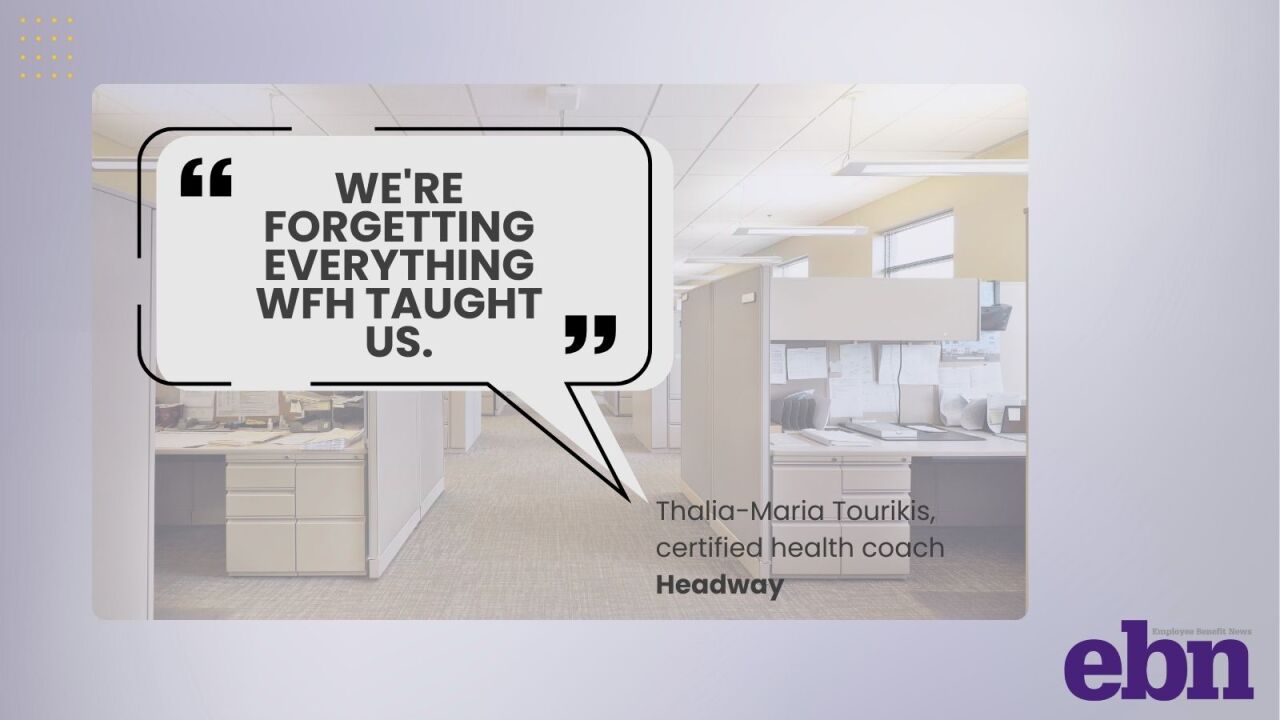Tiffany Dufu and Cate Luzio know a thing or two about professional women.
Dufu is the founder of the Cru, a peer-coaching tech platform for women that in September was acquired by
This is a tall order, and one that's gotten more complicated in the wake of the COVID-19 pandemic. Long gone are the days of the "she-cession" — the 2020 and 2021 departure of millions of women from the workforce — but today's working women are facing both lingering and new challenges while
Read more:
For prime-aged working women, men still earn 16% more, and while men's salaries rise throughout the entirety of their careers,
"On the positive side, when five million women left the workforce, it was predicted that it would take a hell of a lot longer to get them back," says Luzio, who spent two decades as a top banking exec before launching Luminary and serving as its CEO. "Now we're seeing the highest level of labor participation in the market by women really ever, but you still have to look at who's in and who's being locked out."
Luzio and Dufu recently spoke with EBN about who's still being excluded from professional success, as well as what a shifting corporate attitude toward DEI efforts means for the workforce and why smart businesses should double down on
Post-COVID, what's changed for working women, what's improved, and what new challenges have appeared?
Luzio: Most women are at capacity, even if they're not a parent or a caregiver. They're still being asked to do more with less.
Read more:
Dufu: The scope of what entailed your career expanded in the wake of the pandemic. It used to be that, if you were in sales, you loved interfacing with your clients, it motivated you, you met your targets, loved your career and were successful. You didn't think about the fact that your boss was a jerk, or that if you didn't feel a sense of belonging, that that was part of your job, too. But now, even if I'm very good at my core function, if the culture is not conducive to my
So there's a comfort in saying, 'I can get something better'?
Luzio: Comfort is a good word, and there's comfort in owning the next part of your career, but a nervousness about finding the right thing. For women, we know it's harder to get back into the workforce if you've
Dufu: Women are confident that they can find another job. But they're not confident in finding a place where they can thrive.
How do those concerns shift or evolve for women of color?
Dufu: There's
Read more:
What are you hearing from corporate partners and business leaders about their approach to helping women employees thrive?
Luzio: I'm not one to pull punches. Companies spent the last three-plus years trying to retain their people. And now, in a tough economic market, the first place the budget cuts go is to the people. And I don't just mean workforce reduction — I mean professional development, learning and development, employee resource groups,
Dufu: And yet, when you talk to the employer, one of their top concerns is retention.
But this irony is lost on them?
Dufu: We're seeing companies say, "We need to broaden [efforts] and not focus on specific groups of people," and I think that's just a response to the current political and legal backlash to DEI efforts. But companies still have the same problem that they need to contend with, which is that there is an overrepresentation of white, heterosexual men in senior leadership that can't be explained by normal statistics. That is the core challenge. The population is contracting and diversifying, and by 2040 the workplace will be majority people of color. So if you haven't invested in initiatives and strategies to ensure that people belong and are thriving, you're not going to retain them. And we're heading toward a future where, if you can't retain them, you're in trouble.
For cost-conscious organizations, what's the bridge between investing in all workers' growth and balancing increasingly tight budgets?
Dufu: The solution is part of the reason I'm excited about what Cate has taken over with the Cru and what she's really building with Luminary, which is: You need solutions at lower price points so that you're not breaking the bank for a company. Companies will have to invest in scalable, low-cost solutions that really meet the needs of a wider group of individuals that you can hopefully retain. Cate calls them "women in the midst," which I really love.
Read more:
What does "women in the midst" mean, and why is it such an important (and often overlooked) group of talent?
Luzio: These women are part of what we like to call the power middle. Not everybody wants to be in the C-suite, not everybody will get to the C-suite. And so we still have to support the people that are in the power middle. We've sort of jammed in this notion that the only way you're successful is if you get into the C-suite, and I don't believe that. I didn't want to be the CEO of a bank, right? So I left. We need to support the ambitious and driven women that may not want to sit at the executive leadership level.
Dufu: "Women in the midst" is an important demographic to focus on — they are the largest demographic of women in the workplace. And I believe that if we can support them in navigating their lives and their careers, it's not just companies that will benefit. Their families will benefit. I believe our communities will benefit. It's a larger investment in society and in the world.






